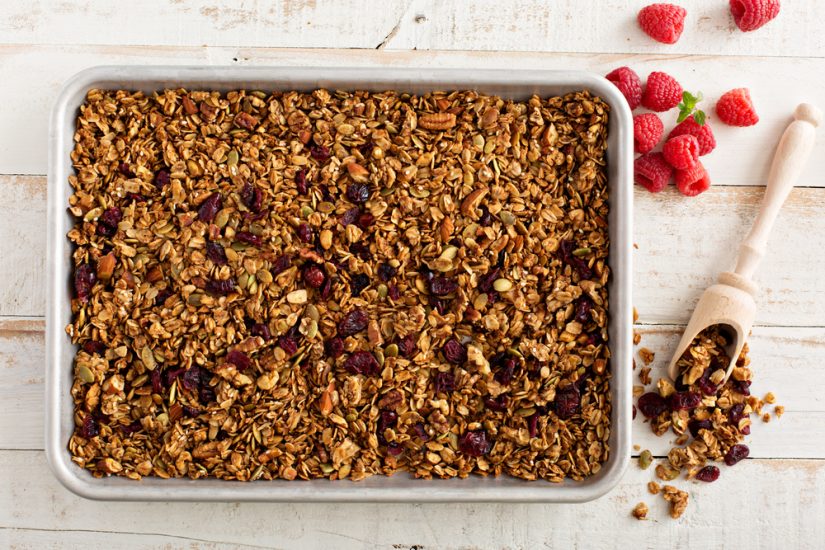March is National Nutrition Month, and that means it’s time to focus (or refocus, for some of us) on eating healthier this year. However, choosing nutritious foods and maintaining a healthy diet doesn’t come easy to everyone. Here are five beginner tips to create healthy eating habits.
#1. Identify your pitfalls.
We all have them. Those eating habits that are less-than-healthy. Maybe it’s grabbing fast food at lunch or making trips to the vending machine for snacks. Once you’ve identified them, find a healthier solution to each one. That could be packing your lunch instead of going through the drive-thru or eating a more filling breakfast so you don’t find yourself at the vending machine at 10 a.m. Don’t try to fix them all overnight. Start with one at a time. Before you know it, you’re eating healthier throughout the day!
#2. Get your kitchen organized.
An organized kitchen will make it easier for you to stick to your healthy eating plan. First, clean out your refrigerator and kitchen cabinets. Get rid of anything that’s really unhealthy or expired, and then organize what’s left. Store healthy whole grains, like brown rice and oats, in clear, air-tight containers that are easy to see and reach. Spices are essential to healthy cooking, so organize them in a door-mount spice rack. Keep pots and pans stored near the stove so they’re easily accessible when cooking. Reusable plastic containers are great for storing leftovers, so make sure to have plenty on hand.
Remember, healthy eating habits don’t happen overnight, so give it time!
#3. Know what a serving is and what it looks like.
Knowing what a serving size of a specific food looks like will help keep you from overeating. The Food Pyramid is a great resource to learn how many servings of grain, fruits, veggies and meat you should be getting daily. But it’s also important to know what an actual serving looks like. Health experts at the American Heart Association say a serving size is smaller than what we think. They say a baseball-sized apple or orange is one serving of fruit. Three ounces of lean meat is considered one serving and is roughly the size of a computer mouse. Knowing what a serving size looks like will help you practice portion control and prevent overeating.
#4. Plan your meals.
Meal planning will help you make wise food choices at the grocery store and prevent you from those unhealthy impulse buys. It will also make cooking at home easier, so you’re less likely to order pizza or takeout. If you’ve never made a meal plan before, start simple. Choose a few healthy dishes per week that you feel comfortable making. You can even double the recipes so you have enough to take for lunch or have as leftovers the next night. Write down all the ingredients you’ll need, and then take that list to the store. Don’t forget to include healthy breakfast and snack foods, too. Strapped for time? Consider signing up for a meal planning service.
#5. Aim for a more colorful meal.
This is a good place to start if you’re trying to eat healthier. Add more color to your meals by swapping out chips and processed foods with nutritious fruits and vegetables in an array of colors. Not only will this make your meal more interesting to the eye, but it’ll mean you’re getting a variety of vitamins and nutrients your body needs. Plus, this will help you achieve the recommended 5-9 daily servings of fruit and vegetables.
New kitchen cabinets or kitchen organization could be just the inspiration you need to cook and eat healthier this year! TheRTAStore has a great selection of affordable kitchen cabinets and everything that goes with them, from hardware to inside cabinet accessories. Our friendly kitchen design experts are here to help, so get started today!




